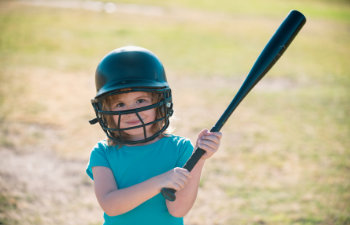
Little League Elbow is a common condition that affects young baseball players, particularly pitchers. This overuse injury can cause significant pain and discomfort, potentially sidelining a young athlete if not addressed promptly. At Manhattan Sports Therapy, we specialize in treating sports-related injuries, including Little League Elbow. In this blog, we’ll discuss what Little League Elbow is, its symptoms, causes, and how a sports physical therapist can help your child recover and get back in the game.
Understanding Little League Elbow
Little League Elbow, medically known as medial epicondyle apophysitis, occurs when repetitive throwing motions place excessive stress on the growth plate located on the inside of the elbow. This condition is most common in young athletes between the ages of 8 and 15, whose bones are still developing. The repetitive stress can cause inflammation, pain, and even damage to the growth plate if not managed properly.
Symptoms of Little League Elbow
Recognizing the symptoms of Little League Elbow is crucial for early intervention and treatment. Common symptoms include:
- Pain on the Inside of the Elbow: This pain usually worsens with throwing and other repetitive arm movements.
- Swelling: The inside of the elbow may appear swollen and tender to the touch.
- Decreased Throwing Performance: Athletes may notice a decline in their throwing speed and accuracy.
- Stiffness and Limited Range of Motion: The elbow may feel stiff, and the athlete might have difficulty fully extending or bending the arm.
- Weakness in the Arm and Hand: Affected athletes may experience a decrease in grip strength and overall arm strength.
Causes of Little League Elbow
Little League Elbow is primarily caused by repetitive throwing motions that stress the elbow joint. Contributing factors include:
- Overuse: Pitching too frequently without adequate rest can lead to overuse injuries.
- Improper Throwing Mechanics: Incorrect technique can increase the strain on the elbow.
- Inadequate Warm-Up: Failing to properly warm up before throwing can make the elbow more susceptible to injury.
- Lack of Conditioning: Weak muscles and poor overall physical conditioning can contribute to the development of Little League Elbow.
How a Sports Physical Therapist Can Help
Sports physical therapists play a crucial role in the prevention, treatment, and rehabilitation of Little League Elbow. Here’s how they can help:
1. Assessment and Diagnosis
A sports physical therapist will perform a thorough assessment to diagnose Little League Elbow accurately. This includes evaluating the athlete’s medical history, conducting a physical examination, and analyzing their throwing mechanics. Proper diagnosis is essential for developing an effective treatment plan.
2. Personalized Treatment Plan
Once diagnosed, the sports physical therapist will create a personalized treatment plan tailored to the athlete’s specific needs. This plan typically includes:
- Rest and Activity Modification: Reducing or temporarily stopping throwing activities to allow the elbow to heal.
- Pain Management: Using techniques such as ice therapy, ultrasound, and manual therapy to reduce pain and inflammation.
- Strengthening and Conditioning Exercises: Targeted exercises to strengthen the muscles around the elbow, shoulder, and core to improve overall arm mechanics and reduce stress on the elbow.
- Flexibility and Range of Motion Exercises: Stretching exercises to improve flexibility and restore the full range of motion in the elbow.
3. Throwing Mechanics and Technique Training
A significant aspect of treatment involves addressing and correcting improper throwing mechanics. Sports physical therapists work with athletes to develop proper techniques that reduce stress on the elbow. This includes drills and exercises to reinforce correct throwing motions and improve overall performance.
4. Gradual Return to Sport
Returning to baseball too quickly can lead to re-injury. Sports physical therapists guide athletes through a gradual return-to-sport program. This step-by-step approach ensures that the athlete’s elbow is fully healed and capable of withstanding the demands of throwing. The program may include:
- Progressive Throwing Program: A structured plan that gradually increases throwing intensity and volume.
- Monitoring and Adjustments: Regular check-ins with the therapist to monitor progress and make necessary adjustments to the program.
5. Education and Prevention Strategies
Preventing Little League Elbow from recurring is crucial. Sports physical therapists educate athletes, parents, and coaches on proper training techniques, the importance of rest, and strategies to prevent overuse injuries. This comprehensive approach helps young athletes maintain their health and performance throughout their sports careers.
Turn to Our Manhattan Experts for Sports Injury Recovery
Little League Elbow is a preventable and treatable condition that requires early intervention and expert care. At Manhattan Sports Therapy, our team of experienced sports physical therapists is dedicated to helping young athletes recover from injuries and achieve their full potential. If your child is experiencing symptoms of Little League Elbow, don’t wait—schedule an appointment with us today to ensure they receive the best possible care and get back to doing what they love.
Posted on behalf of
515 Madison Avenue FL 22A
New York, NY 10022
Phone: (212) 310-0100
Email: sportstherapy150@icloud.com


